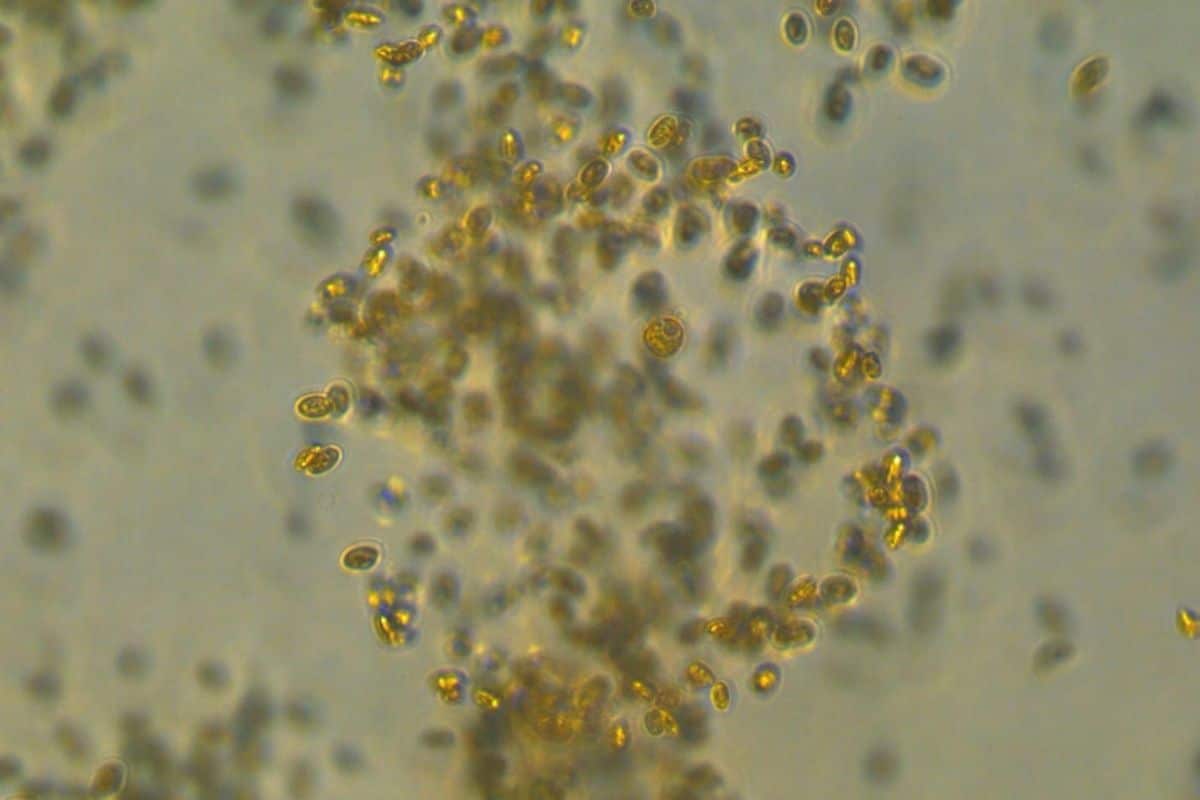

The tiny single-cell could be an important weapon in our fight against climate change.
Scientists have discovered a rather unusual marine microbe off the coast of Sydney. It is a single cell with a special talent; in this way it can capture and store carbon in a natural way like no other. The study offers a whole new understanding of the ocean’s carbon cycles. And it may even inspire new, nature-inspired carbon capture methods to combat climate change.
Microbe
The researchers tested the newly discovered and promising microbe Prorocentrum cf. balticum mentioned. Incidentally, this micro-organism is not a bacteria or animal, but a so-called protist; a eukaryotic organism that cannot count itself either in the realm of animals, plants or fungi. Prorocentrum cf. balticum is an entirely new species and has not been described in such detail before. And that while this organism could come in handy in our efforts to achieve the established climate goals.
Mixotroph
How exactly? Prorocentrum cf. balticum is a ‘mixotroph’, which means that it can get its energy from both inorganic and organic substances. This basically means that it can photosynthesize just like a plant, but it can also consume other organisms. In that sense, the newly discovered microbe is somewhat like a carnivorous plant. “Most terrestrial plants use nutrients from the soil to grow,” said researcher Michaela Larsson. “But some plants get extra nutrients by also catching insects.”
slime
The way in which Prorocentrum cf. balticum hunts is particularly interesting. Because he then uses the carbon he gets through photosynthesis to make a kind of ‘slime ball’ – a so-called mucosphere. “He uses this slime to attract and trap other microbes,” explains Larsson in an interview with Scientias.nl from. The microbe then eats some of the captured prey. The rest of the slime ball containing the prey that has become encrusted sinks to the bottom, where it is part of the natural biological carbon cycles.

Artistic representation of the mixotrophic protist Prorocentrum cf. balticum in a ‘mucosphere’ that has captured microscopic prey. Image: Larsson et al. (2022)/Glynn Gorick
In this miraculous way, there may be more carbon being stored naturally in the ocean than we currently think. For example, the researchers estimate that Prorocentrum cf. balticum annually single-handedly sinks about 0.02 to 0.15 gigatons of carbon. And possibly even in places that until now scientists didn’t know were potential sites of carbon sequestration (see box).
“The microbe is abundant and widespread in the oceans,” Larsson said. “That’s why we think that large amounts of carbon from the upper part of the ocean are sinking. Incidentally, this is the first time such behavior has been documented. It therefore represents a previously overlooked mechanism that contributes to the vertical flow of carbon into the ocean.”
Climate goals
Achieving the goals of the Paris Climate Agreement requires that we remove about 10 gigatons of CO2 from the atmosphere every year until 2050. Larsson is moderately positive about our ability to avert the worst effects of climate change. “It’s not too late, but we’re reaching a tipping point,” she says. “Strong measures are now needed.” And so the newly discovered microbe could potentially be an important weapon in our fight against climate change.
Carbon Capture Talent
That’s because Prorocentrum cf. balticum is also capable of sequestering carbon in a warmer and more acidic ocean. Thus, despite deteriorating nutrient-deficient ocean conditions—which we will see more and more of under current climate change trends—the microbe’s carbon scavenging talent will be preserved. And we could potentially use that to our advantage. “It would be great to grow this microbe on a large scale to enrich parts of the ocean,” Larsson suggests. “However, before we actually do something like this, we need to study what its effects are, for example on the ecosystem and how it might affect other organisms.”
The findings from the study in any case, provide a whole new understanding of the ocean’s carbon cycles. “The study would be a game changer could be in the way we think about carbon and how it moves in the marine environment,” says Larsson. “The production of high-carbon slime is of such magnitude that it makes a significant contribution to the global carbon cycle. This means that the way we think carbon circulates in the ocean would need to be overhauled. The advanced behavior of microbes must also be considered. And that will make our picture of what the future ocean will look like under a changed climate much more realistic.”
Source material:
†Tiny ocean predator with appetite for carbon capture” – University of Technology Sydney
Interview with Michaela Larsson
Image at the top of this article: